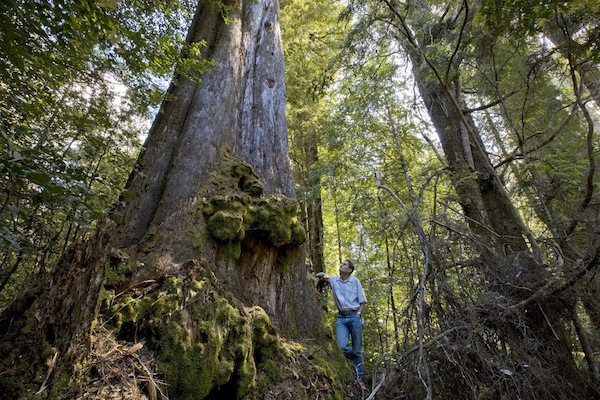A forum in Hobart last week revealed the big transformation currently under way in our forest industries. [6 December 2011 | Peter Boyer]
Ah, the rich tapestry of life! Trees large and small, spaced and crowded. Crops and weeds, fungi and bacteria. Animals and their waste, wriggling worms, teeming maggots, rotting logs, leaf litter, compost. Conception, birth, death, decay, rebirth.
Switch to a Tasmanian government forum led by a couple of ministers, a Canberra bureaucrat and a corporate executive. Can there be any greater contrast, anywhere in the universe?
Believe it or not, the two came together last week in Hobart. For a hundred minutes in a crowded Parliament House seminar room, opposite sides of Tasmania’s chronic forestry debate heard the case for a totally new way to manage Tasmania’s forests.
Deputy Premier and Minister for Forests Bryan Green seemed to take in his stride the dire warnings from Climate Change Minister Cassy O’Connor about our very uncertain future if political processes, including the world climate meeting in Durban, fail to secure the agreement we need.
“We must have some faith that the alarming seriousness of the challenge we face will provoke meaningful, urgent action,” said O’Connor. “If governments, corporations and communities fail to respond, we are heading for a catastrophe that is almost beyond imagining.”
I’m used to Tasmanian political figures skating over scientific warnings about the consequences of climate change, but O’Connor didn’t blink as she spelt out the disastrous impact of more intense weather events, species stress and extinction from habitat loss, and threats to human health.
Warned that Tasmanian emissions (though below 1990 levels) are “trending upwards”, O’Connor issued her call to arms: “What are we going to do about it?” A good question, heard all too rarely.
In a reference to her bill introduced last month for a 2020 emissions target with zero net emissions by 2050, O’Connor argued that Tasmania — “a renewable power house, an innovative community, [with] some of the best carbon banks on the planet” — can be a responsible global citizen.
With around 20 per cent of global greenhouse emissions coming from deforestation, retaining carbon-dense forests was a cost-effective way to cut emissions. “In the context of growing carbon markets, and a burgeoning forest restoration industry, our forests are worth more standing.”
There was a time, not so long ago, that the likes of Bryan Green might have been expected to come out swinging at such words. Not now. Markets for carbon storage, he told the forum, could be “a new string to our forestry bow”.
Green described his “amazing ride” since taking over as forests minister. Gunns’ exit from native forest logging coinciding with the emergence of a carbon market were two indicators of a transformed industry.
Green doesn’t see carbon storage replacing conventional forestry. Forestry’s historical contribution to Tasmania’s economy and to many communities around the State had created wealth and employed thousands. It remained a crucial part of sustainable sawmill, veneer mill and wood product industries.
“But we need to continue to achieve the maximum benefit from our world class forest resources and carbon markets will be a part of that future. The do-nothing approach being advocated by those with their heads still firmly stuck in the sand is not an option.”
“There is no denying we are in a time of change. Carbon markets are likely to place a high value on carbon stored in forests which will help provide a revenue source that will support forest protection at a scale consistent with an ongoing industry.”
Green’s words reflect the reality of the transformation that our forestry sector has been going through for years now, so no-one should be surprised at this apparent paradigm shift. His big task is to persuade battle-worn timber communities that they do, in fact, have a future.
That should be helped by other initiatives on show at the forum. Shayleen Thompson, head of the federal climate change department’s land division, explained how the “carbon farming initiative” could provide farmers and forest managers with an income from businesses needing to offset carbon emissions.
Thompson advised that the scope for such activity would be increased by Australia’s participation in a global forest carbon pact. At Kyoto in 1997 Australia chose to remain outside the land-use agreement because it failed to account for special cases such as large-scale emissions from wildfire.
Finally came James Bulinski, a consultant from CO2 Australia, a company specialising in commercial reforestation for carbon storage, which has just won the contract to ascertain how much carbon is acquired, stored and lost by Tasmania’s forests. The work may be the basis of a whole new industry: as Bulinski said “forest carbon is becoming very big business”.
Managing forests for their carbon has enormous potential for Tasmania, with a number of options available whether or not Australia joins a global forest agreement.
But it will need to play its cards right, ensuring that in any change of land tenure its stated intention is to protect forests’ carbon storage capacity. Added to our rich history of forest politics, whichever way you look at it this is a delicate balancing act.

